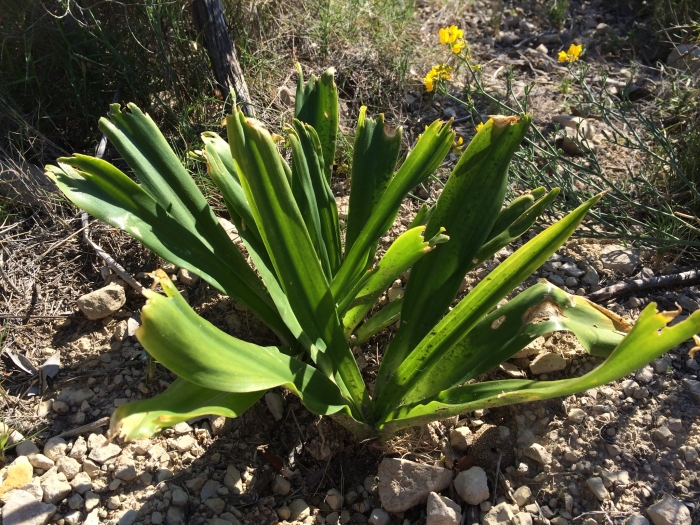Sea Squill
(Drimia maritima)
Sea Squill (Drimia maritima)
/
/

nick_goldwater
CC BY 4.0
Image By:
nick_goldwater
Recorded By:
Copyright:
CC BY 4.0
Copyright Notice:
Photo by: nick_goldwater | License Type: CC BY 4.0 | License URL: http://creativecommons.org/licenses/by/4.0/ | Rights Holder: nick_goldwater | Publisher: iNaturalist | Date Created: 2016-04-09T17:50:42-07:00 |


























































Estimated Native Range
Summary
Drimia maritima, commonly known as Sea Squill, is a semi-deciduous perennial bulb native to rocky coastal areas, and is found in Southern Europe, North Africa, and the eastern Mediterranean region. It is adapted to a Mediterranean climate with hot, dry summers and mild, wet winters. The plant grows from a large bulb, which can be up to 20 cm (7.9 in) wide and weigh 1 kg (2.2 lb). Bulbs often grow in clumps just beneath the soil surface. In spring, each bulb produces a rosette of about ten dark green, leathery leaves, each up to a meter long. These leaves die back by fall, when the bulb sends up a tall, narrow raceme of flowers, reaching 1.5–2 m (4 ft 11 in – 6 ft 7 in) in height. The flowers, about 1.5 cm (0.59 in) wide, have six tepals with a dark midvein and are typically white, except for the red-flowered form. The fruit is a capsule up to 1.2 cm (0.47 in) long.
Sea Squill is valued for its striking vertical inflorescence and is used in rock gardens, as a focal point in borders, or naturalized in coastal landscapes. It is drought-tolerant once established, making it a low-maintenance choice for water-wise gardens. The plant’s ability to thrive in poor soils and its resistance to pests and diseases add to its horticultural appeal. In cultivation, Sea Squill requires full sun or part shade, low to medium water, and well-drained soil. It is not commonly affected by diseases or pests, but it can be sensitive to overwatering, which may cause bulb rot.CC BY-SA 4.0
Sea Squill is valued for its striking vertical inflorescence and is used in rock gardens, as a focal point in borders, or naturalized in coastal landscapes. It is drought-tolerant once established, making it a low-maintenance choice for water-wise gardens. The plant’s ability to thrive in poor soils and its resistance to pests and diseases add to its horticultural appeal. In cultivation, Sea Squill requires full sun or part shade, low to medium water, and well-drained soil. It is not commonly affected by diseases or pests, but it can be sensitive to overwatering, which may cause bulb rot.CC BY-SA 4.0
Plant Description
- Plant Type: Bulb
- Height: 4-7 feet
- Width: 1-2 feet
- Growth Rate: Moderate
- Flower Color: White
- Flowering Season: Summer
- Leaf Retention: Semi-Deciduous
Growth Requirements
- Sun: Full Sun, Part Shade
- Water: Low, Medium
- Drainage: Fast
Common Uses
Bee Garden, Low Maintenance, Potted Plant, Rock Garden, Salt Tolerant, Showy Flowers
Natural Habitat
Rocky coastal areas in Southern Europe, North Africa, and the eastern Mediterranean region
Other Names
Common Names: Sea Onion, Maritime Squill, Red Squill, Squill
Scientific Names: , Urginea maritima, Drimia maritima, Urginea scilla, Scilla maritima, Squilla maritima, Charybdis maritima, Urginea anthericoides, Scilla anthericoides, Urginea maritima var. purpurascens
GBIF Accepted Name: Drimia maritima (L.) Stearn